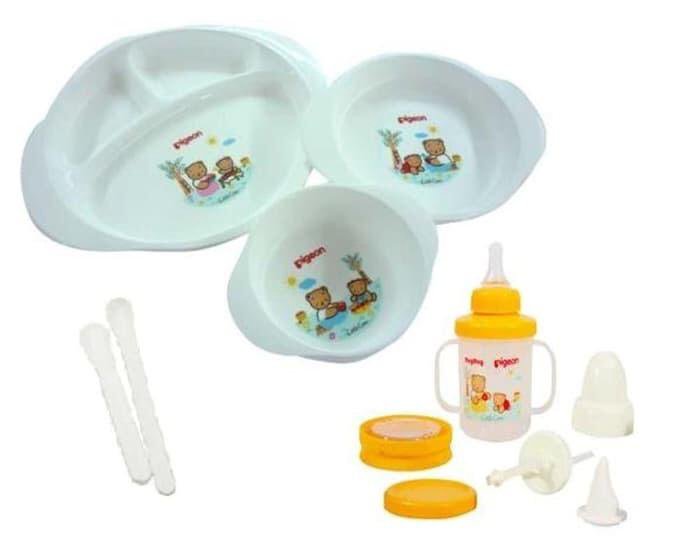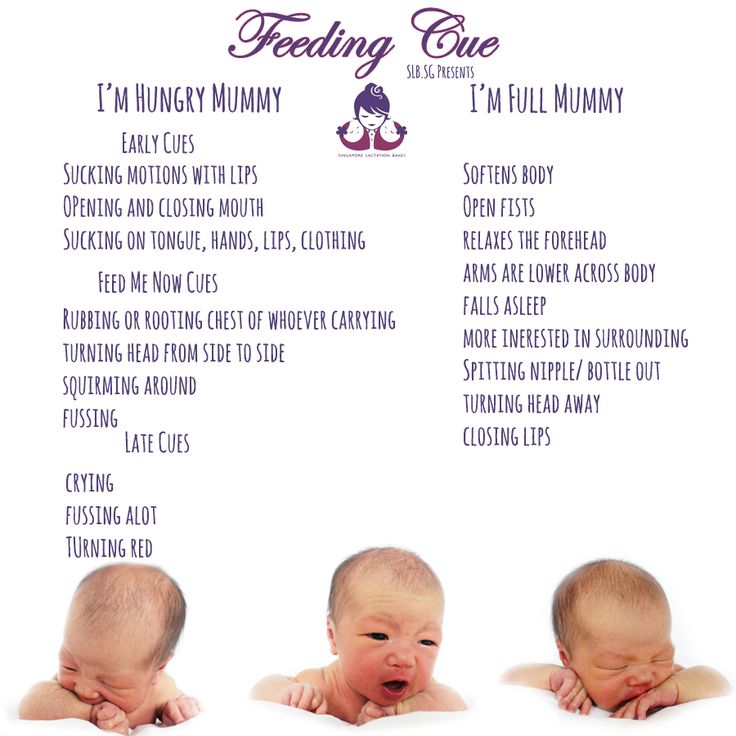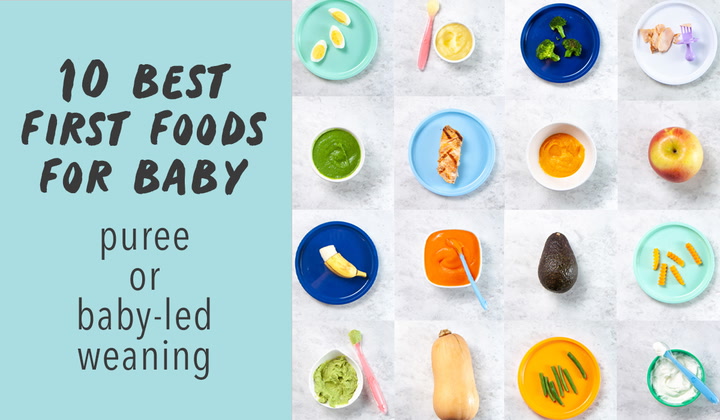Pigeon cooking set for baby food feeding
Pigeon cooking set for baby food feeding, Babies & Kids, Nursing & Feeding, Weaning & Toddler Feeding on Carousell
Babies & Kids
Nursing & Feeding
Weaning & Toddler Feeding
Pigeon cooking set for baby food feeding
Brand new
Meetup
Puchong
Description
Posted
1 year ago
Meet-up
Puchong
Meet the seller
莱恩 伊
@eelainetangJoined 2 years ago
Very Responsive
Verified
Reviews for @eelainetang
5. 0
(
65
)
@abbymei25∙12 days ago
My daughter so like it . Tqvm .. 谢谢 ❤️
Mell Chan hair salon
RM55
@noorazina82∙14 days ago
item masih baru dan sangat cantik❤️... penghantaran laju...seller baik dan ramah😘... highly recommended 💯💯💯👍
Winnie the Pooh computer mouse
RM28
@tiranabila∙14 days ago
Nice item to buy with reasonble price
Leapfrog phonics radio
RM25
Read all reviews莱恩 伊@eelainetang
5.0
(65 reviews)
Follow us
Blog
Carousell College
Cars & Property
Cars
Auto Accessories
Property
Motorbikes
Jobs & Services
Jobs
Services
Fashion
Women's Fashion
Luxury
Men's Fashion
Beauty & Personal Care
Others
Everything Else
Looking For
Following
Free Items
Home & Living
Furniture & Home Living
Babies & Kids
Health & Nutrition
Food & Drinks
Pet Supplies
Electronics & Mobiles
Computers & Tech
Video Gaming
Mobile Phones & Gadgets
Audio
Photography
TV & Home Appliances
Hobbies & Games
Toys & Games
Music & Media
Books & Magazines
Stationery & Craft
Collectibles & Memorabilia
Sports Equipment
Tickets & Vouchers
Travel
Mudah. my
my
Sdn Bhd [200701024583 (782603-V)]
a Carousell Group company
Help Centre
Contact Us
Press
Jobs
Advertise with Us
Terms
Privacy
English繁體中文 (台灣)繁體中文 (香港)Bahasa Indonesia
First Baby Food Maker Set
Afghanistan (AFN؋)
Åland Islands (EUR€)
Albania (ALLL)
Algeria (DZDد.ج)
Andorra (EUR€)
Angola (USD$)
Anguilla (XCD$)
Antigua & Barbuda (XCD$)
Argentina (USD$)
Armenia (AMDդր.)
Aruba (AWGƒ)
Ascension Island (SHP£)
Australia (AUD$)
Austria (EUR€)
Azerbaijan (AZN₼)
Bahamas (BSD$)
Bahrain (USD$)
Bangladesh (BDT৳)
Barbados (BBD$)
Belarus (USD$)
Belgium (EUR€)
Belize (BZD$)
Benin (XOFFr)
Bermuda (USD$)
Bhutan (USD$)
Bolivia (BOBBs. )
)
Bosnia & Herzegovina (BAMКМ)
Botswana (BWPP)
Brazil (USD$)
British Indian Ocean Territory (USD$)
British Virgin Islands (USD$)
Brunei (BND$)
Bulgaria (BGNлв.)
Burkina Faso (XOFFr)
Burundi (BIFFr)
Cambodia (KHR៛)
Cameroon (XAFFr)
Canada (CAD$)
Cape Verde (CVE$)
Caribbean Netherlands (USD$)
Cayman Islands (KYD$)
Central African Republic (XAFFr)
Chad (XAFFr)
Chile (USD$)
China (CNY¥)
Christmas Island (AUD$)
Cocos (Keeling) Islands (AUD$)
Colombia (USD$)
Comoros (KMFFr)
Congo - Brazzaville (XAFFr)
Congo - Kinshasa (CDFFr)
Cook Islands (NZD$)
Costa Rica (CRC₡)
Côte d’Ivoire (XOFFr)
Croatia (HRKkn)
Curaçao (ANGƒ)
Cyprus (EUR€)
Czechia (CZKKč)
Denmark (DKKkr.)
Djibouti (DJFFdj)
Dominica (XCD$)
Dominican Republic (DOP$)
Ecuador (USD$)
Egypt (EGPج.م)
El Salvador (USD$)
Equatorial Guinea (XAFFr)
Eritrea (USD$)
Estonia (EUR€)
Eswatini (USD$)
Ethiopia (ETBBr)
Falkland Islands (FKP£)
Faroe Islands (DKKkr. )
)
Fiji (FJD$)
Finland (EUR€)
France (EUR€)
French Guiana (EUR€)
French Polynesia (XPFFr)
French Southern Territories (EUR€)
Gabon (XOFFr)
Gambia (GMDD)
Georgia (USD$)
Germany (EUR€)
Ghana (USD$)
Gibraltar (GBP£)
Greece (EUR€)
Greenland (DKKkr.)
Grenada (XCD$)
Guadeloupe (EUR€)
Guatemala (GTQQ)
Guernsey (GBP£)
Guinea (GNFFr)
Guinea-Bissau (XOFFr)
Guyana (GYD$)
Haiti (USD$)
Honduras (HNLL)
Hong Kong SAR (HKD$)
Hungary (HUFFt)
Iceland (ISKkr)
India (INR₹)
Indonesia (IDRRp)
Iraq (USD$)
Ireland (EUR€)
Isle of Man (GBP£)
Israel (ILS₪)
Italy (EUR€)
Jamaica (JMD$)
Japan (JPY¥)
Jersey (USD$)
Jordan (USD$)
Kazakhstan (KZT〒)
Kenya (KESKSh)
Kiribati (USD$)
Kosovo (EUR€)
Kuwait (USD$)
Kyrgyzstan (KGSsom)
Laos (LAK₭)
Latvia (EUR€)
Lebanon (LBPل. ل)
ل)
Lesotho (USD$)
Liberia (USD$)
Libya (USD$)
Liechtenstein (CHFCHF)
Lithuania (EUR€)
Luxembourg (EUR€)
Macao SAR (MOPP)
Madagascar (USD$)
Malawi (MWKMK)
Malaysia (MYRRM)
Maldives (MVRMVR)
Mali (XOFFr)
Malta (EUR€)
Martinique (EUR€)
Mauritania (USD$)
Mauritius (MUR₨)
Mayotte (EUR€)
Mexico (USD$)
Moldova (MDLL)
Monaco (EUR€)
Mongolia (MNT₮)
Montenegro (EUR€)
Montserrat (XCD$)
Morocco (MADد.م.)
Mozambique (USD$)
Myanmar (Burma) (MMKK)
Namibia (USD$)
Nauru (AUD$)
Nepal (NPR₨)
Netherlands (EUR€)
New Caledonia (XPFFr)
New Zealand (NZD$)
Nicaragua (NIOC$)
Niger (XOFFr)
Nigeria (NGN₦)
Niue (NZD$)
Norfolk Island (AUD$)
North Macedonia (MKDден)
Norway (USD$)
Oman (USD$)
Pakistan (PKR₨)
Palestinian Territories (ILS₪)
Panama (USD$)
Papua New Guinea (PGKK)
Paraguay (PYG₲)
Peru (PENS/. )
)
Philippines (PHP₱)
Pitcairn Islands (NZD$)
Poland (PLNzł)
Portugal (EUR€)
Qatar (QARر.ق)
Réunion (EUR€)
Romania (RONLei)
Russia (USD$)
Rwanda (RWFFRw)
Samoa (WSTT)
San Marino (EUR€)
São Tomé & Príncipe (STDDb)
Saudi Arabia (SARر.س)
Senegal (XOFFr)
Serbia (RSDРСД)
Seychelles (USD$)
Sierra Leone (SLLLe)
Singapore (SGD$)
Sint Maarten (ANGƒ)
Slovakia (EUR€)
Slovenia (EUR€)
Solomon Islands (SBD$)
Somalia (USD$)
South Africa (USD$)
South Georgia & South Sandwich Islands (GBP£)
South Korea (KRW₩)
South Sudan (USD$)
Spain (EUR€)
Sri Lanka (LKR₨)
St. Barthélemy (EUR€)
St. Helena (SHP£)
St. Kitts & Nevis (XCD$)
St. Lucia (XCD$)
St. Martin (EUR€)
St. Pierre & Miquelon (EUR€)
St. Vincent & Grenadines (XCD$)
Sudan (USD$)
Suriname (USD$)
Svalbard & Jan Mayen (USD$)
Sweden (SEKkr)
Switzerland (CHFCHF)
Taiwan (TWD$)
Tajikistan (TJSЅМ)
Tanzania (TZSSh)
Thailand (THB฿)
Timor-Leste (USD$)
Togo (XOFFr)
Tokelau (NZD$)
Tonga (TOPT$)
Trinidad & Tobago (TTD$)
Tristan da Cunha (GBP£)
Tunisia (USD$)
Turkey (USD$)
Turkmenistan (USD$)
Turks & Caicos Islands (USD$)
Tuvalu (AUD$)
U. S. Outlying Islands (USD$)
S. Outlying Islands (USD$)
Uganda (UGXUSh)
Ukraine (UAH₴)
United Arab Emirates (AEDد.إ)
United Kingdom (GBP£)
United States (USD$)
Uruguay (UYU$)
Uzbekistan (UZS)
Vanuatu (VUVVt)
Vatican City (EUR€)
Venezuela (USD$)
Vietnam (VND₫)
Wallis & Futuna (XPFFr)
Western Sahara (MADد.م.)
Yemen (YER﷼)
Zambia (USD$)
Zimbabwe (USD$)
maintenance, feeding, breeding, advantages of ornamental birds
Pigeons are noble and beautiful birds. In many life situations of a person, they act in symbolic roles - a dove of peace, wedding pigeons, carrier pigeons. This bird, perhaps, most often comes into contact with people than all other free birds. Of course, since there is nowhere without pigeons, the business of breeding them is expanding and gaining momentum. The pigeon farm is almost as popular today as the broiler or indoo farm. It has become especially fashionable to use these birds to decorate the wedding ceremony. And here, among the numerous breeds of pigeons, the most beautiful, stately, elegant peacock pigeon is in the lead.
And here, among the numerous breeds of pigeons, the most beautiful, stately, elegant peacock pigeon is in the lead.
Peacock pigeons
Contents of the article
- 1 “Legs, wings… The main thing is the tail!”
- 2 Where did the Pavlins fly to us
- 2.1 prices for pigeons for pigeons
- 3 Description
- 4 Standards of rock
- 4.1 Features
- 5 How to choose a pair of
- 6 Pedules
- ,0009 6.1 Preparation for mating and hatching step by step instructions
- 6.1.1 Step 1. Disinfection
- 6.1.2 Step 2: Preparing the steam boxes
- 6.1.3 Step 3: Arranging the steam boxes
- 6.1.4 Step 4: Selecting a pair
- 6.1.5 Step 5: Mating
- 6.1 Step 6.1 Incubation
- 6.2 Prices for oscillates
- 6.2.1 Step 7. Display
- 6.3 How to feed a dove chick
- 7.1 Winter ration 9000 9000 9000 900 9000
- 7.
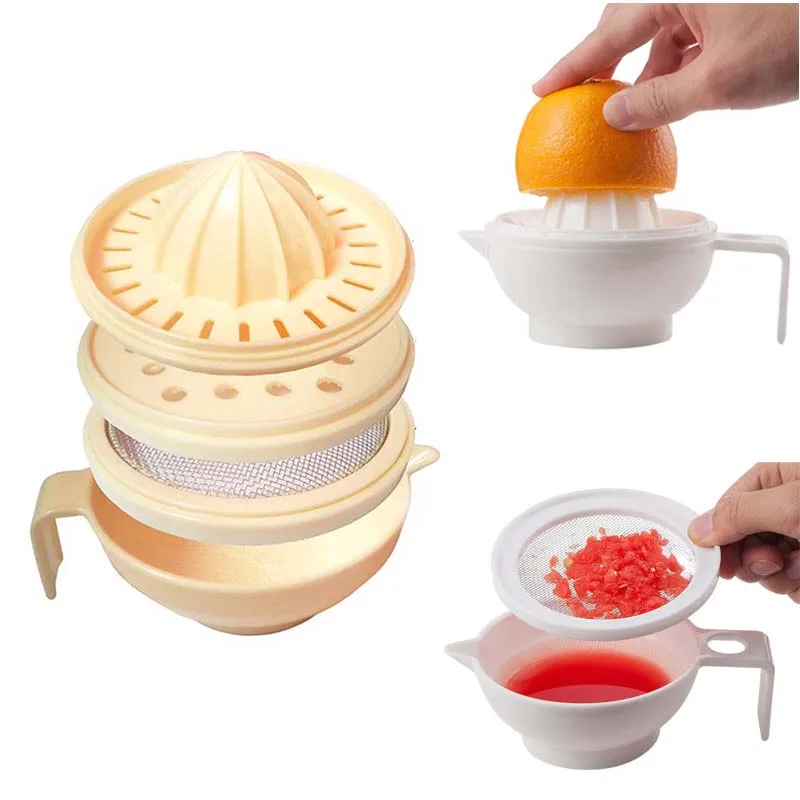 3 Tribal diet
3 Tribal diet - 7.4 Route ration (Gona)
- 7.5 The diet of molting period
- 8.1 Video - pigeons of the Pavlina rock
- 8.2 - pigeons of Baibarza Leonida
"Legs, wings... The main thing is the tail!"
The peacock pigeon is very popular among the people and among professional pigeon breeders. It is enough to look at a representative of this breed, as its comparison with a peacock immediately becomes clear.
Peacock pigeons are very similar to the peacocks themselves, because of the vertical tail. The tail consists of forty (plus/minus 10) feathers. The bird always holds this feather splendor vertically, as only a peacock can. The outer ends of the feathers are crumpled, similar to old lace. These fluffy curls make up a whimsical fan that decorates the bird in an extraordinary way.
The tail is especially remarkable in this breed of pigeons
By the way. When in 1669 experts first began to describe the breed, fixing its specific features, the number of feathers in the tail of a peacock pigeon was no more than thirty. But breeders are tirelessly and successfully working to improve and improve the exterior of the bird, and today there are individuals with fifty or more feathers in the "peacock" tail.
But breeders are tirelessly and successfully working to improve and improve the exterior of the bird, and today there are individuals with fifty or more feathers in the "peacock" tail.
There can be more than 50 feathers in the tail of this bird
Birds of this breed lend themselves well to training, so they can be found almost everywhere - from the circus to the wedding ceremony, where peacock doves with white plumage serve as a symbol of purity and holiness of the rite in the hands of the newlyweds and start a new happy life.
Peacock pigeons can often be seen at a wedding, in the hands of newlyweds
Where did the "peacocks" come from
By the way, once peacock pigeons were excellent flyers. They traveled great distances and were physically fit for long flights. Thanks to numerous breeding activities, the birds have become more beautiful, but have practically lost the ability to fly. You can even breed peacock pigeons in open enclosures without fear that they will fly away.
Peacock pigeons have practically lost the ability to fly, so they can be kept even in open cages
And the breed originates in Northern India. Once upon a time, these pigeons walked through the halls of the palaces of Indian rajas and the central squares of large cities, proudly striding and carrying their tails held high.
Pigeons were brought from India to England in the 16th century by seafarers, who caught them and presented them to the English court as an overseas curiosity. Then they were taken to Holland to marvel, and from there the peacock pigeons set off to conquer Europe with their beauty. Birds spread around the world as an ornamental breed quite quickly, in 20-30 years. But in Russia they appeared in the 40s of the last century.
Due to their incredible beauty, peacock doves quickly conquered Europe
Prices for pigeon cages
Pigeon cage
Description
If you want to mentally see a peacock dove, imagine a fluffy ball. A small head sticks out of the ball on top, on which, unlike many decorative pigeon breeds, there is no forelock. On the side of the ball, a fan-shaped, vertical, completely luxurious, delicate, breathtaking tail is attached to a thick feather pillow, which the bird wears with pride. Maybe just to demonstrate its magnificent tail, or maybe for some other reason, but the peacock dove walks as if on tiptoe. This makes the bird a little funny, but very attractive. She seems to be flirting all the time, touchingly puts on airs and flaunts in front of the public.
A small head sticks out of the ball on top, on which, unlike many decorative pigeon breeds, there is no forelock. On the side of the ball, a fan-shaped, vertical, completely luxurious, delicate, breathtaking tail is attached to a thick feather pillow, which the bird wears with pride. Maybe just to demonstrate its magnificent tail, or maybe for some other reason, but the peacock dove walks as if on tiptoe. This makes the bird a little funny, but very attractive. She seems to be flirting all the time, touchingly puts on airs and flaunts in front of the public.
Demonstrating their fluffy tail, peacock doves walk as if on tiptoe
The paws of the peacock dove are rather short. Steeply convex breast, which makes the appearance look like a ball. In birds of white color, the eyes are always black, and in individuals with dark plumage, they are orange-red.
Feathers are available in different colors and combinations. You can meet peacock doves:
- white;
White
- gray;
Gray
- pink;
Pink
- variegated;
Variegated
- blue;
Blue
- caramel;
Caramel
- beige;
Beige
- brown;
Brown
- two-color.
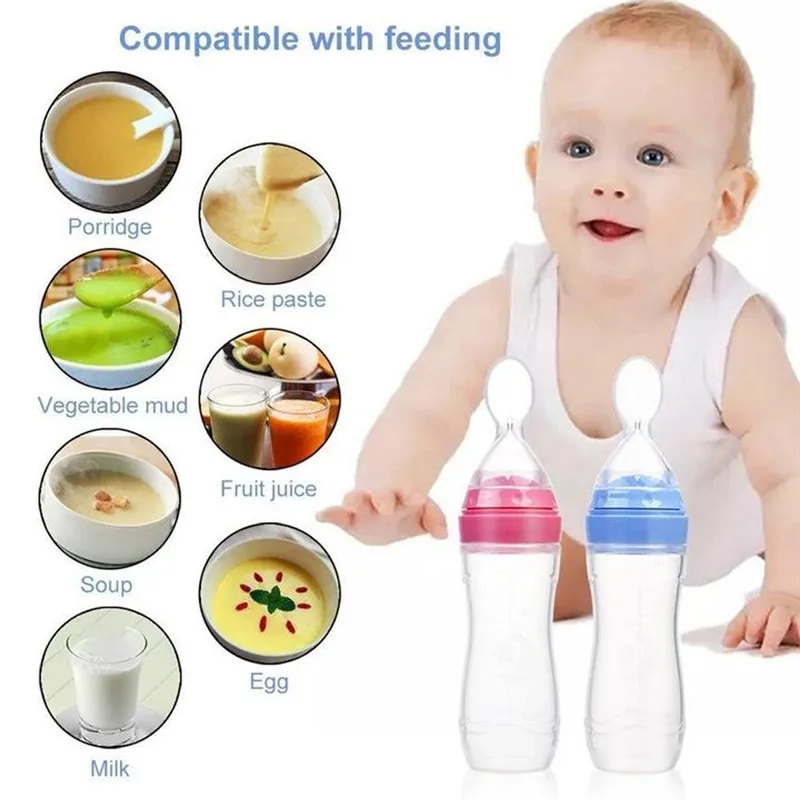
Bicolour
Breed standards
This breed, beloved by all pigeon breeders of the world, has three regulatory standards:
- American;
- Hungarian;
- Russian.
However, this stems only from the desire to show their interest in these birds. Differences in all standards are small. The Russian insists on the large size of the bird, the other two prefer smaller pigeons to be ideal. If we derive the general requirements that are found in all three options, a real peacock dove should have the following characteristics.
Peacock pigeons come in three breeds, but there are no special breed differences
Standard features
| Parameter | Description |
|---|---|
| Chest | is a flat hemisphere, small size |
| Back | smooth, narrow, with notch in the middle |
| Height | medium-sized bird, it seems tall only because it walks upright "on tiptoe" |
| Head | small, reclined |
| Eyes | shiny, small, black or orange-red; the skin surrounding the eye sockets must be the same color as the beak |
| Beak | small, finely shaped |
| Tail | lush, includes from 30 to 50 or more feathers, the presence of a feather cushion at the root is obligatory, bent vertically. |
Features
- Peacock pigeons need to trim a few centimeters of 5 feathers on each side of the tail before the mating season. Their fan tail interferes with mating and prevents reproduction.
Before the mating season, the tail is trimmed to 5 centimeters on each side
- Peacock pigeons are very prolific. In addition, they are excellent parents and always successfully feed all their offspring.
- In a calm state, the male stands and walks, like all other birds - on a full foot. But as soon as he sees the female, he immediately begins to "care" for her. To do this, the peacock dove stands on its toes, like a ballerina in a ballet stance, and begins to swing meditatively.
- The inability to fly well in peacock pigeons is not congenital, but acquired through numerous selections, but they can be trained to fly in a circle, which is successfully done by those who breed white "peacocks" for use in wedding ceremonies.

- The peacock dove can, throwing its head back far and arching its chest steeply, stand motionless for a long time, demonstrating itself in all its glory.
Peacock dove with head thrown back
How to match
The most important question for the breeder after he has decided on the breed and started breeding pigeons is the selection of individuals with the highest characteristics for mating.
The creation of a parent pair is a responsible event, to which two approaches can be practiced.
Creating a pair is a complex and responsible process
The first is a homogeneous (homogeneous) selection. It means that a dove and a dove with the same characteristics are selected so that they pass to the offspring in an enhanced form (increase in inherited qualities).
The second is heterogeneous (heterogeneous). The qualities of the male and female are high, but different. A kind of selection with offspring that can be both very successful and not very, in any case, unpredictable (increased variability of offspring).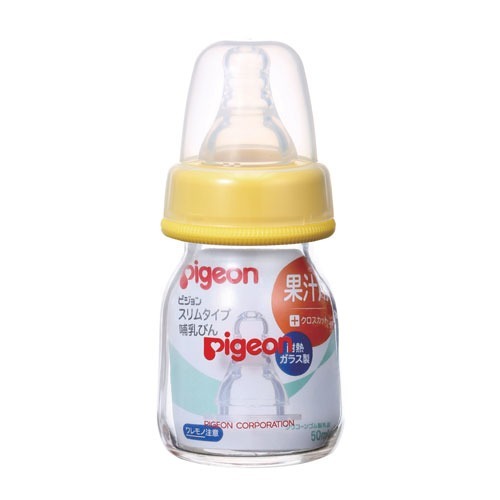
A heterogeneous couple can give unpredictable results
Important! The selection parameter for a tribe occurs according to the coefficient of heritability. Origin, development, constitution and growth are the indicators that make the heritability coefficient high.
Everyone who breeds pedigreed pigeons should think over the conduct of mating in order not to lose, but to improve their natural qualities. Purebred birds with a solid pedigree should be used. But even if someone is taken into a pair of lower bloodlines, his shortcomings must be covered by the impeccability of the blood of the second paired bird.
Purebred birds should be used for mating.
When the undesirable traits have been suppressed by the high pedigree dominant and the traits of the desired breed are firmly established in the offspring, improvement of the secondary traits can begin.
By the way. Signs that are overwhelming and overlap others that are inferior to them are called dominant in the language of professional pigeon breeders.
Suppressed traits that are inferior to dominants are recessive.
Species of dominance
| Species | Description |
|---|---|
| Complete | Characteristics of all chicks have characteristics identical to one of the parents. |
| Incomplete | In chicks, signs of one parent are predominantly observed, but at the same time, signs of the second are also clearly visible. |
| Intermediate | Inheritance is intermediate, with appropriate similarity characteristics. |
| Codominance | The traits of both parents are equally pronounced in the chicks. |
| Overdominance | Hereditary traits are manifested in the offspring to a greater extent than they are present in the parents. |
Important! When crossing peacock pigeons with opposite traits, the offspring comes out exclusively with dominant traits.
In this case, recessiveness does not affect the phenotype (external indicators of the genotype), but it may well manifest itself in subsequent generations.
When crossing pigeons with opposite traits, the offspring comes out with dominant traits
If the mating of peacock pigeons is not controlled by the breeder, mutations occur, and the breed may eventually lose all breeding traits, which will undoubtedly have a negative impact on all pigeon breeding. Therefore, when breeding pedigree birds, pedigree records must be kept. Keep a dossier on each feathered pet and enter data on its origin, height, weight, and developmental features.
With uncontrolled mating, the breed may lose all its characteristics, even the tail
Keeping peacock pigeons
Despite their unearthly beauty, peacock pigeons are considered by breeders to be the most unpretentious and undemanding to breeding conditions. Today, these are aviary birds, since they fly poorly and not far, however, most of the selected decorative breeds are similar to them in this.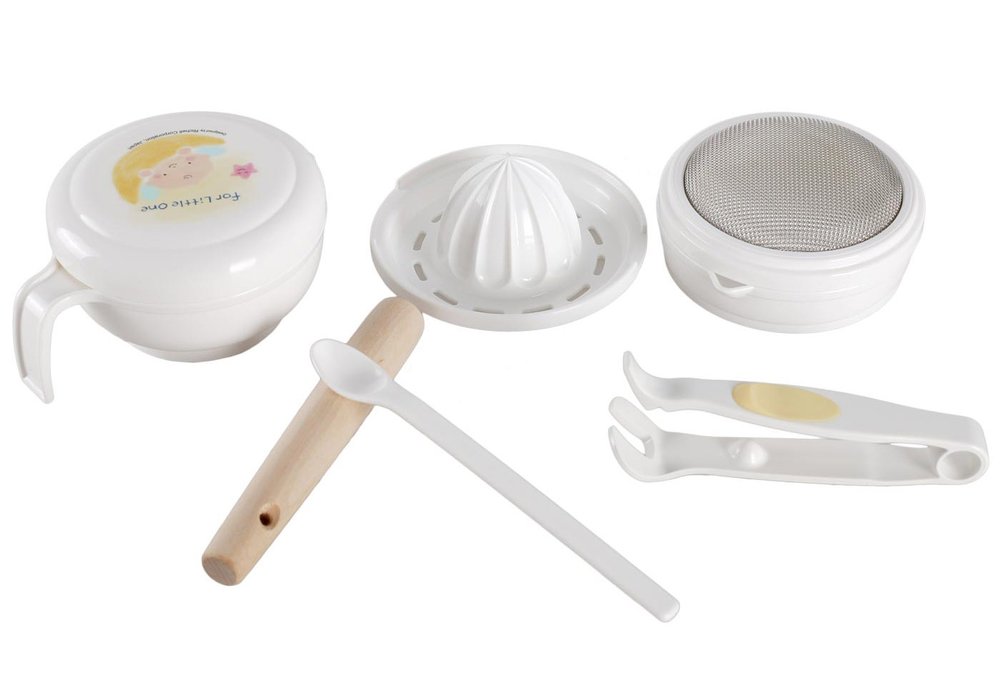
Peacock pigeons kept in enclosures
Before you start breeding pigeons in earnest, you will have to find and equip a room and provide everything for the birds to stay in it. For aviary breeds, you will need an area for walking. It is also desirable to prepare food at least a few weeks in advance.
Food and vitamins for pigeons
If you are going to breed pedigree chicks, almost from the beginning of the year, already in February-March, you need to prepare for nesting.
Nests required for hatching chicks
This is perhaps the most serious and responsible process of all pigeon care activities.
Tip. In order to stimulate the breeding process, on the eve of the mating period, pigeons begin to be given vitamins and a little raw dough or sprouted grain.
Sprouted grain can be added to the bird's diet to stimulate the breeding process
Preparing for mating and hatching step-by-step instructions
Step 1.
 Disinfection
Disinfection It doesn't matter if the bird house is new, newly equipped, or it already houses other birds, it must be disinfected before the nesting period. Existing birds are transplanted to another place or released for walking. You can use store-bought disinfectants, chlorine ("Whiteness"), or other means that you trust. Before processing, the enclosures and the premises, which have already been used before, are washed from dirt and litter, and are freed from debris. Birds are settled only in housing that has dried well after disinfection.
The first step is to disinfect the room
Step 2. Preparing the steam boxes
Mating boxes (steam boxes) can be purchased but are easy to make yourself. The dimensions of the box should be 70x50x40 cm. You can make it out of wood. After mating, the steam box easily turns into two nest boxes, it is worth putting a partition and spreading the nests on opposite sides.
Steam boxes can be purchased ready-made or you can make your own
Step 3 Arrange the steam boxes
It is very important to place the mating boxes correctly in the dovecote. They must be placed at the greatest possible distance one at a time, so that in the future the pigeons can easily navigate and quickly find their nest. For the same purpose, the surface of each is recommended to be covered with paint of different colors.
They must be placed at the greatest possible distance one at a time, so that in the future the pigeons can easily navigate and quickly find their nest. For the same purpose, the surface of each is recommended to be covered with paint of different colors.
It is advisable to make steam boxes at a distance from each other
Step 4. Choosing a couple
You already know what genetic and exterior parameters to choose a couple for creating a family and giving birth to offspring. But also important are the physical parameters by which the selection of a pair is carried out. You need to choose quite well-fed, but in no case overweight birds. Too fat females can carry “dummy” eggs, that is, not fertilized. In addition, they experience serious difficulties in laying eggs. Too thin birds are not the most conscientious hens. They do not like to sit on eggs, and strive to leave the egg-laying and go in search of food. At the same time, they usually underfeed their chicks.
Thin females may give up eggs, so fat brood hens should be selected
Step 5.
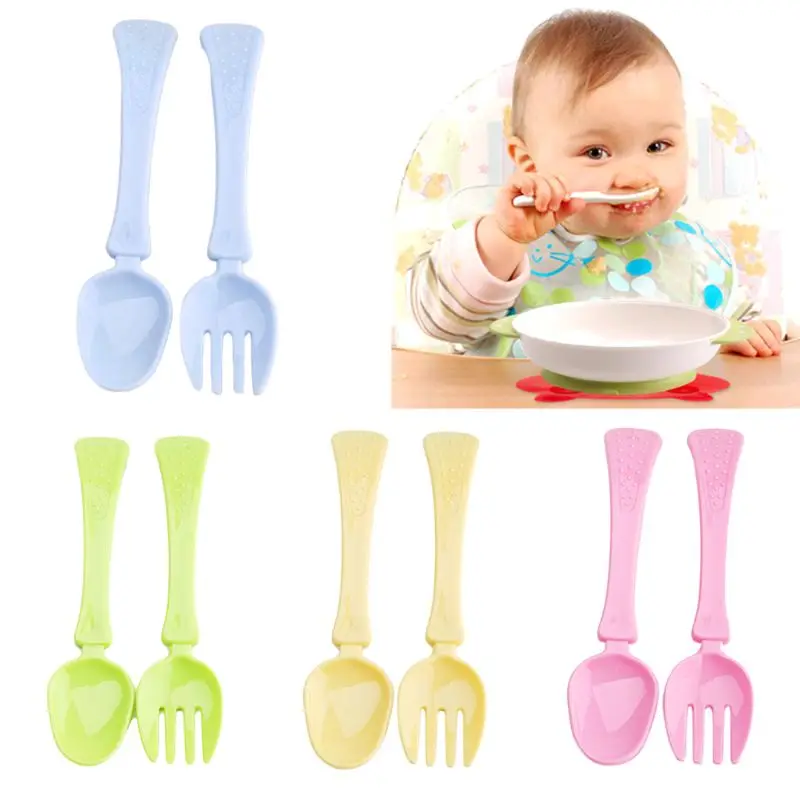 Mating
Mating The prepared pair is placed inside the steam box overnight and closed there. In the morning, the pigeons are released into the aviary and monitored for some time. If they stick together, and the male takes care of the female, then everything has happened. You can put a nest in a mating box and wait for an addition to a new pigeon family.
At night, the prepared steam is closed in the steam box
Step 6. Incubation
Two or three days after mating, the dove lays two eggs. Young females may have as little as one egg. After this, incubation begins, which lasts for peacock pigeons from 16 to 19 days. The task of the breeder during this period is to disturb the bird in the nest as little as possible.
Tip. It is recommended to check the eggs around the 12th day for the presence of embryos using an ovoscope. By this time, the blood vessels of the future chick are already clearly visible.
On the 12th day the egg is checked through an ovoscope
Prices for an ovoscope
Ovoscope
Step 7.
.jpg) Hatching
Hatching The chicks have hatched safely and the parents begin to intensively take care of the offspring. Peacock pigeons are especially good in this regard, which are usually perfect parents. But anything happens. The breeder needs to remember that pigeon chicks are born absolutely helpless, without feathers, very tiny. And without food, they can live no more than three hours. Therefore, it is necessary to control the parents, whether they have fulfilled their functions and whether they have forgotten to feed the chicks. Dove feeds babies with goiter milk. If there are two chicks, she tries to feed them both at the same time. If this does not happen for more than 2.5 hours, it is necessary to feed the chicks artificially.
Peacock pigeons are considered caring parents, but still it is worth checking the feeding process
How to feed a pigeon chick
In order to replace the mother of a chick, you need to mix a few tablespoons of warm milk with mashed boiled yolk. The chicks are fed with this mixture using a pipette. If you have a formula for baby food, you can use it for feeding. Millet, crushed wheat and other solid foods begin to be given to chicks from the age of one month.
The chicks are fed with this mixture using a pipette. If you have a formula for baby food, you can use it for feeding. Millet, crushed wheat and other solid foods begin to be given to chicks from the age of one month.
Artificial feeding of chicks
Diet of peacock pigeons
The specificity of feeding depends on the season and changes with the seasons. Feeding during the mating season, during oviposition, incubation of eggs, feeding of chicks, during the flight and at the peak of molting also has features.
Winter diet
Begins with the onset of December and lasts until mid-February - before the start of the breeding season.
In winter, birds, especially those in unheated poultry houses, should be fed a high-calorie, low-protein diet. The most common proportions are 40% wheat and 60% barley. Legumes are not present in the winter diet.
The winter diet of pigeons consists of 60% wheat and 40% barley
Important! Do not feed the birds in the winter, when they are cold and have nowhere to walk, with fast-digesting food.
Birds sit motionless for a long time, and on an empty stomach they can die from hypothermia, even at minimal positive temperatures. Therefore, in winter, pigeons are fed to the full.
Mating preparation diet
Begins immediately after the winter diet, from mid-February. It is characterized by the fact that cultures rich in protein are actively introduced into the food of birds. It is important, at the same time, not to overfeed the birds with proteins, so legumes should be no more than 20% of the main feed. Also at this time, it is necessary to add up to 12% of oilseeds (flax and hemp, as well as small sunflower seeds) to the feed. Such feeding will ensure the speed and efficiency of mating and hassle-free egg-laying.
In the period of preparation for mating, sunflower seeds can be added to the diet
Breeding diet
Starts from the beginning of March. And here, feeding mixtures should contain not only protein, but also minerals, vitamins, oils, and amino acids. Such a diet will not only enhance the function of reproduction, but also ensure the breeding of healthy offspring and the successful feeding of young animals.
Such a diet will not only enhance the function of reproduction, but also ensure the breeding of healthy offspring and the successful feeding of young animals.
Breeding diet
| Component | Number (%) |
|---|---|
| Broken wheat | 30 |
| Small sunflower seeds | 5 |
| Millet | 15 |
| Rye bread crumbs | 15 |
| Oats | 15 |
| Flax seeds (hemp) | 4 |
| Yeast (dough) | 1 |
Tip. To the feed mixture, while the breeding period lasts, vitamin E (fat-soluble, sold in the form of tocopherol) is added - 3 drops per kilogram of the feed mixture, and potassium iodide (antistrumine) - 70 g per kilogram.
Flight diet (rut)
It starts from April, and is relevant only for those peacock pigeons that breeders train for circular flight. In the rut, the feed mixture should be rich in carbohydrates so that the birds can easily replenish the energy spent on flights. At the same time, the components should be easily digestible and not weigh down the flight.
In the rut, the feed mixture should be rich in carbohydrates so that the birds can easily replenish the energy spent on flights. At the same time, the components should be easily digestible and not weigh down the flight.
For birds trained to fly in April, it is necessary to include more carbohydrates in the diet
Diet during the rut
| Component | Amount (%) |
|---|---|
| Legumes (vetch, peas) | 20 |
| Wheat | 10 |
| Millet | 30 |
| Barley | 30 |
| Hempseed (if it is not in the diet, it is necessary to proportionally increase the amount of oats) | 5 |
| Oats | 5 |
Molt period diet
The peak of molt falls on August-October, therefore, at this time, handsome peacock pigeons are offered a complete protein diet. Otherwise, the molting process will stretch until winter, the quality of the feather will deteriorate, and the pigeon itself will be weakened and will not be able to enter the wintering normally.
Otherwise, the molting process will stretch until winter, the quality of the feather will deteriorate, and the pigeon itself will be weakened and will not be able to enter the wintering normally.
Pigeons need protein in autumn, otherwise the molting period will start later and the appearance of the bird may suffer
Main moult diet
| Component | Amount (%) |
|---|---|
| Vika | 10 |
| Millet | 20 |
| Peas | 20 |
| Wheat | 10 |
| Oats | 20 |
| Dried corn | 10 |
| Barley | 10 9019four |
Tip. At this time, it is useful to add 10 ml of fish oil to the feed per kilogram of the mixture. Throughout the year, fresh grass is added to the feed of pigeons, if possible.
When preparing feed mixtures for peacock pigeons, their physiology must be taken into account. Unlike their postal "ancestors", quarries and other large breeds, these birds are small and have a short, small beak. It is difficult for them to eat large grains, corn, and even more legumes. Therefore, feed for peacock pigeons must be crushed (crushed).
Unlike their postal "ancestors", quarries and other large breeds, these birds are small and have a short, small beak. It is difficult for them to eat large grains, corn, and even more legumes. Therefore, feed for peacock pigeons must be crushed (crushed).
For pigeons of this breed, all food must be crushed
Feeding rules
How to understand that the pigeon is not starving? How to determine what he ate? Answers to these questions can be obtained by observing feathered pets.
- Feed should be enough so that the bird eats it without residue, and does not dig in the feeder after eating, scattering half-eaten grain.
- Whether a pigeon is full or not can be understood by feeling its goiter. It should be full, but soft, not overstuffed.
- Peacock pigeons should be fed in small portions three times a day in summer and twice a day in winter.
- When a breadwinner appears, hungry birds flock to him, spreading their wings (fluttering) - this is a sign that they are not overfed.

- In the evening, all dovecote feeders are removed, cleaned, washed, and set out again before giving the morning portion of feed.
Peacock pigeons need to be fed in small portions, 3 times a day in summer, and 2 times a day in winter
Peacock pigeons, especially those that are not trained to fly, have underdeveloped muscles and a weak esophagus. Physically, they are not very hardy, and the daily feed rate for them should be reduced by almost half, compared with the feed rate for birds of larger breeds. On average, it is up to 45 g of feed per day per head.
Video - Pigeons of the peacock breed
Video - Pigeons of the peacock Baibarz Leonid, Belaya Tserkov
Birds in winter | How to help birds in winter
02/11/2015
Good deed or how to help birds in winter
In this article, in brief, we will try to answer the questions: what birds winter in central Russia; the meaning, diet, features, timing and norms of feeding birds in winter; types of bird feeders; how to properly place the feeder. What is it for? It is necessary in order, first of all, not only not to harm the birds, but also to facilitate their existence in difficult winter times.
Birds are one of nature's natural self-regulators.
Some birds destroy insects, thereby saving trees and shrubs from harmful insects. Others feed on the fruits of trees and shrubs, spreading them around, increasing the forest zone. Still others are mostly birds of prey, they are called feathered orderlies, live in forests, feed on mice and small birds, mostly sick or weakened.
Still others are mostly birds of prey, they are called feathered orderlies, live in forests, feed on mice and small birds, mostly sick or weakened.
More than 300 species of birds are found in the Moscow region, some of them constantly nest here, others can be seen in the warm season, others, on the contrary, only in winter, others migrate in transit and can be seen when they stop to replenish their strength between flights.
All this variety of birds has its own habitat - some settle everywhere, others prefer a certain habitat: reservoirs, bolts, forests, meadows, farmland places and cities. This is largely due to the "diet" of birds.
In central Russia, in addition to a large and diverse family of passerines, you can meet representatives of various waterfowl, predators.
The seasonal behavior of birds is greatly influenced by the diet of birds.
Those birds whose diet is based on a pronounced seasonal nature (insects, frogs), almost all migrate to where they can find food - to "warm lands". These include birds whose habitat disappears with the onset of cold weather. Starlings, wagtails, larks, black-headed gulls, warblers, swans, etc. are prominent representatives of this group.
These include birds whose habitat disappears with the onset of cold weather. Starlings, wagtails, larks, black-headed gulls, warblers, swans, etc. are prominent representatives of this group.
Birds with a plant-based diet are most often sedentary (for example: fieldfare thrush, spotted woodpecker, black-headed goldfinch), although some may migrate to places where they can find their favorite food (for example: long-tailed tit ).
Birds of prey can also be divided into migratory and sedentary. The reason for their migration is mainly the presence or absence of food supply. Their migration is mainly related to the search for food.
There is another category of birds, the so-called "city dwellers", which lead a settled way of life and are a constant companion of man. These primarily include the gray crow, pigeons and sparrows.
Importance of bird nutrition in winter
Many have thought about how hard it is for birds to survive in winter?
It has long been known that many birds die in winter not because of the cold, but because of the lack of the usual good nutrition.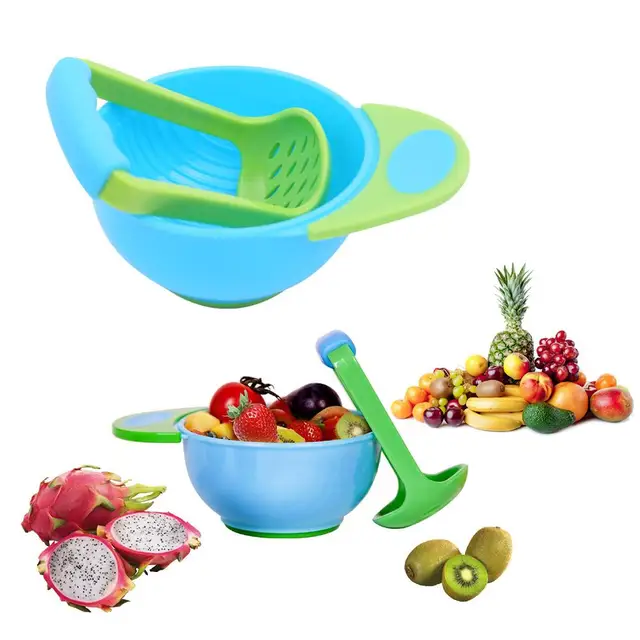 Therefore, in order to preserve the bird population, many of them need additional feeding.
Therefore, in order to preserve the bird population, many of them need additional feeding.
Winter is a difficult time of the year for all birds, but not because of the cold and frost, but because with the onset of cold weather, their food supply disappears or is significantly reduced. In order not to freeze, they need a lot of energy for warming, and for this you need to constantly replenish it - eat, and more often and more than in the summer. “Frost is not terrible for a well-fed one” - this can be said about birds. The winter day is short and the birds have little time to search for food. Therefore, birds tend to go where it is easier to find food and where you can hide from the winter cold - to cities, towns, villages closer to people.
Feeding the birds in winter taking care of nature
Bird feeders are not just about taking care of our little brothers, but also taking care of yourself.
Imagine if all the birds destroying pests disappeared at once - the consequences would be simply catastrophic, which would threaten humanity itself.
First of all, this applies to small representatives of the feathered family remaining for the winter, in the diet of which there is plant food, as well as various insect pests. In winter, many of these birds move closer to humans, to cities, towns and villages, because here it is easier for them to feed and survive.
Properly organized top dressing will help more birds survive in winter, their gratitude in summer is the destruction of pests in forests, parks, squares and household plots.
Wintering birds or which birds stay wintering
To begin with, let's look at some birds whose food is based on insects, they are most vulnerable in winter. Usually these are representatives of the sparrow order and more than others need human help. These birds can be attributed both to urban birds and to the inhabitants of parks, alleys, gardens and other urban green areas of large and small cities.
| Great tit | | Long-tailed Tit |
| Lives in summer in forests of various types, outside settlements, in large parks, rarely near human dwellings. In winter - lives closer to people. | | Lives in different types of deciduous forests. In Moscow and the Moscow region, it can be found in birch and alder forests of forest park areas. Some birds lead a sedentary lifestyle, stay for the winter and live near their nesting sites. |
| | | |
| Great spotted woodpecker | | Lesser spotted woodpecker |
| The most common type of woodpecker in the Moscow region. Inhabits various forested areas. In winter, it feeds on pine and spruce seeds, and is a frequent visitor to bird feeders in parks. | | A species common for the central European zone, found on forest edges, in river valleys, in parks. It does not fly away for the winter, a frequent visitor to bird feeders in parks. |
| | | |
| Muscovy or Little Tit | | Blue Tit |
| In Moscow and the Moscow region - a common species, found only in large forest parks, where coniferous trees predominate. | | Common inhabitant of Moscow region and Moscow deciduous forests and parks; in the city often settles in the yards. It nests in hollows of trees, in holes in concrete lampposts, in chimneys of fences. For the winter, some birds remain in nesting places, some migrate. Titmouse flock to bird feeders, especially often in years of poor seed harvest. Here they feed on peanuts, sunflower seeds, unsalted lard and leftover food. |
| | | |
| Bullfinch | | Field and house sparrows |
| Our winter guest from the Arctic, migrates to central Russia with the onset of the first cold weather. | | The most widespread birds in Russia. The field sparrow is a common inhabitant of the countryside and Moscow parks, the brownie is a resident of cities and large towns. Lives everywhere in Moscow. |
| | | |
| Fieldfare thrush | | Black-headed goldfinch |
| A typical view for the Moscow region. Lives along the edges of the forest or in copses, next to fields and meadows. | | A common bird for the Moscow region. It occurs along the edges of forests, in copses; often settles on the outskirts of villages, in gardens and parks. In winter, it keeps to wastelands, where weeds stick out from under the snow, but sometimes it is not averse to feasting on the contents of bird feeders. |
| | | |
Let's talk about other wintering birds
Pigeons and hooded crows are typical city dwellers.
Gray Ravens
These are one of the most intelligent birds, the main habitat of large and small cities. They are omnivores. Choose places where they are least disturbed. Mostly kept in packs, in which a hierarchy can be traced. Very often they behave aggressively, especially during the period of rearing chicks.
It does not need feeding, because it will always find where and what to profit from. They can also be called the city feathered orderly.
City pigeons
Man has had a very great influence on the distribution and population of these birds, these are the most numerous city birds that originated from the wild rock dove. However, before these birds learned to live next to humans, they went through a long history of domestication.
City pigeons want to eat all the time, but they don't make feeders for them. In addition, these are collective birds, and if at first one dove appeared, then in a couple of minutes a whole flock of them can fly together. City pigeons remember very well the places where they are fed. The average life expectancy of urban pigeons is 2-3 years, while wild pigeons live 12-15 years. This is primarily due to nutrition and population density. Pigeons, like other birds, are contraindicated in “crumbs from the table” and any other food containing various fats. It is best to feed pigeons with various cereals, grains and legumes, seeds that are not fried or salted, as well as raw chopped vegetables and fruits.
City pigeons remember very well the places where they are fed. The average life expectancy of urban pigeons is 2-3 years, while wild pigeons live 12-15 years. This is primarily due to nutrition and population density. Pigeons, like other birds, are contraindicated in “crumbs from the table” and any other food containing various fats. It is best to feed pigeons with various cereals, grains and legumes, seeds that are not fried or salted, as well as raw chopped vegetables and fruits.
City pigeons are probably the only bird that is highly dependent on humans. Therefore, to feed or not, everyone decides for himself.
Wintering waterfowl include:
Mallards
They dominated the ice-free city ponds.
The basis of their diet is vegetation (seeds, leaves and stems of grasses, sedge, duckweed, hornwort, pondweed, mustard, cereals, rice-like leersia, strepoloist, barnyard), insects (grasshoppers), mollusks, fish caviar, earthworms, frogs, tadpoles, snails and slugs (especially for young birds).
For feeding, it prefers shallow water (no deeper than 35-40 cm), so that it can reach the bottom with its beak.
Gogoli
The second largest, but still a common inhabitant of city ponds and streams.
Feeds mainly on aquatic invertebrates. In summer, the basis of the diet is insects and their larvae - caddisflies, bloodworms, water beetles, dragonflies, bedbugs, midges, etc. In winter, it eats more mollusks and crustaceans. It also feeds on earthworms, amphibians and small fish; in autumn, small amounts of seeds, roots and vegetative parts of aquatic plants.
City ducks are very often killed due to malnutrition.
It is not recommended to feed ducks, oddly enough - bread, it does not contain elements useful for the bird and creates a feeling of satiety, as a result, the duck stops looking for other food. It should be noted that soaked bread pollutes the water and leads to the death of some inhabitants of the aquatic environment. It is advisable to avoid peanuts, milk, and any foods that contain saturated fats.
It is advisable to avoid peanuts, milk, and any foods that contain saturated fats.
If you really want to help waterfowl, the best places to feed are:
- grated cheese;
- soft fruits and vegetables (for example, strawberries, or soft apples), exotics are also allowed, for example, bananas;
- oatmeal, in the form of cereals or breakfast cereals.
It is useful to give these products to ducks, especially in spring, when the chicks are hatching. Of the neutral products that at least will not harm the birds, but will not bring any benefit - potatoes, cabbage, worms, small fish.
Some features of bird feeding in winter
Our desire to help birds can be described as "Good deed". Many of us arrange feeding grounds and feeders for birds. But in order for our good intentions not to turn into disaster for the birds, it is necessary to follow some rules in feeding:
1. Constantly, as the feed is used up, but not more than once a day, replenish the feeders. Moreover, it is desirable to do this in the morning, approximately at the same time.
Constantly, as the feed is used up, but not more than once a day, replenish the feeders. Moreover, it is desirable to do this in the morning, approximately at the same time.
2. It should be borne in mind that fried or salted seeds, lard, meat are contraindicated for birds - this is poison for them.
3. Do not feed the birds with crumbs of black or rye bread, this can lead to their death.
4. Never give rancid grain, moldy, musty food to birds, as they produce toxins that are deadly to birds.
5. Millet should not be given to birds, as it does not have a shell, which leads to the oxidation of fats on its surface, the appearance of toxic substances, pathogens.
6. You can not just overfeed the birds, so it is recommended to renew the contents of the feeder no more than once a day.
Best for feeding birds:
1. Millet, oats, wheat - the most versatile food that attracts birds that feed on various seeds and cereals.
2. Sunflower seeds - universal food for wintering birds. A large amount of vegetable fats contained in them are an important source of replenishment of energy in conditions of winter cold.
3. Lard, meat - can also be used for winter feeding of birds. They are very fond of some types of birds. But it is worth remembering that this food should be unsalted and not subjected to heat treatment. This top dressing should be placed in such a way that it would not go to crows, magpies, jackdaws, cats and dogs. Usually it is hung on ropes near the feeders or on special perches in bird feeders.
4. Dried rowan and hawthorn - you need to prepare and dry in advance, from autumn. They attract the most beautiful winter feathered representatives - bullfinches and waxwings.
5. Maple and ash seeds - their seeds are also called lionfish. They mostly fly from trees in autumn and become inaccessible to birds. Lionfish are harvested in autumn and hung on feeders.
6. Cones, acorns, nuts are the main diet of some birds. Having prepared them in the fall, you can attract woodpeckers and jays to your bird feeder.
Many specialized stores sell ready-made bird food, which makes it much easier for you to feed birds in the winter.
Terms and norms of bird feeding
In central Russia, the duration of the feeding season is 180 days (October-March).
The total length of the feeding season depends on climatic conditions, natural forage yield, and other factors.
It makes no sense to start feeding the birds if the weather is calm and warm in October, and there is still enough natural food in nature. Top dressing in the month of October should be started under adverse weather conditions - early cold, rainy weather, early snowfall, as well as crop failure of natural fodder.
The most difficult period - absolute starvation comes only with the freezing of the soil or the fall of deep snow cover.
Therefore, the feed rate should be distributed over periods:
The first period - bait, is approximately 30-45 days (from October 15 to November 30). This is the time to accustom the birds to the feeders. Feed is laid out in an amount of no more than 15-20% of the norm (as long as the birds are reluctant to eat them).
The second period is the main, the most responsible and lasts about 90 days (approximately from December 1 to March 1). At this time, the birds are especially in need of feeding, so they need to be given a full feed rate. However, it is not recommended to overfeed the birds, especially with sunflower seeds - the birds stop consuming a variety of natural foods (believing that they are well fed here), and this reduces their natural resistance to infections, and they become overly dependent on feeding and, as a result, when it is stopped, although For 2 days the birds often die.
The third period - the final one, lasts about 10-25 days (approximately from March 1 to March 25). During this period, 60-80% of the total norm should be laid out. But this period very often depends on the vagaries of nature, but in any case, top dressing should be continued until the first thawed patches appear on the ground.
During this period, 60-80% of the total norm should be laid out. But this period very often depends on the vagaries of nature, but in any case, top dressing should be continued until the first thawed patches appear on the ground.
In places where it is necessary to attract birds, it is possible to place not individual feeders, but entire feeding areas.
Stationary feeding grounds - areas approximately 5x5 or 7x7 m in size, feeders should be evenly spaced over this area. Feeding grounds for birds are usually arranged in places where it is convenient to serve them, and the birds will be the least disturbed. Usually these are alley parks, etc.
Approximate bird feed rates
Cereal mixes (millet, oats or oatmeal, hemp or sunflower, oats, split wheat):
For one feeder per day - 200 g
For the whole season - 11.2 kg
Weed Seed Mix:
For one feeder per day - 200 g
For the whole season - 11.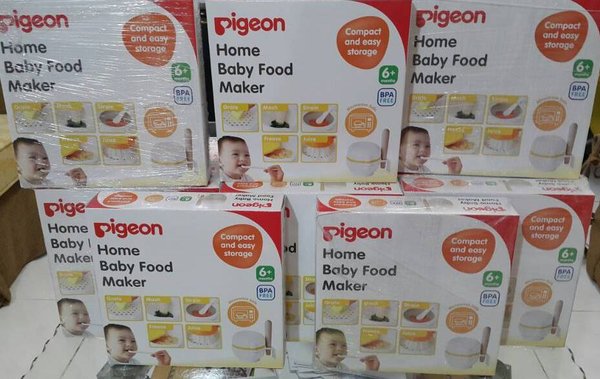 2 kg
2 kg
Meat:
For one feeder per day - 50 g
For the whole season - 2.8 kg
In this case, top dressing should be organized in such a way as to attract no more than five birds to one feeder, because. the accumulation of a large number of birds in one place increases the risk of infection with various diseases.
Types of bird feeders
This is where the fantasy can unfold!
Feeders can be made of different materials - wood, plastic, cardboard and various combinations thereof.
The simplest options are feeders made from plastic bottles, milk or juice bags.
It should be cautioned that those feeders where continuous (permanent) addition of feed in excess of the norm are provided are very undesirable. As mentioned above, birds need to be fed, not overfed. An overfed bird moves less, which is why its metabolism slows down in its body, resistance to diseases decreases and they die.
When making bird feeders, there are a few simple guidelines to follow:
1. Feeders should be sized for the birds you choose to feed. Everyone knows that where crows and doves appear, there is no place for other birds.
2. The feeder must have a roof (canopy) to protect the feed from precipitation (rain, snow). Wet food spoils quickly, and snow that has fallen makes access to food much more difficult.
3. It is advisable to pour the bird food into some small containers, which allows more economical use of food, because. it is less scattered and lost, and also not to overfeed the birds.
4. If the feeder is of a closed type, then the holes for the birds should be such that birds can freely get inside, but you should not get carried away with large sizes, because. food can spill out through them, especially in strong winds.
5. Consider in advance how to attach the feeder. On a suspension bracket, to a wall, a post or a tree.
On a suspension bracket, to a wall, a post or a tree.
Making a feeder, along with feeding the birds, is an educational process and often labor intensive. In addition, not every parent can entrust "his child" with a hacksaw, drill, jigsaw and hammer, and making a feeder himself in the presence of a child is not entirely correct. Moreover, the manufacture of bird feeders can be made part of the labor education of boys, acquiring the skills of designing, assembling and working with a simple tool.
It often happens that there is a desire to do a good deed, but for some reason beyond your control, there is no such possibility, then ready-made sets will help you out.
Ready-made sets of bird feeders made of wood are sold unassembled, complete with everything you need, so your child, under the supervision of a parent, will only need to spend no more than half an hour to assemble.
Tenth Kingdom, a Russian manufacturer of educational games, offers ready-made bird feeders Feeder dimensions: Feeder dimensions: Feeder dimensions:
Art.  No. 01639
No. 01639 Art. No. 01640 Art.
- height - 190 mm;
- length - 220 mm;
- width - 150 mm
- height - 200 mm;
- length - 135 mm;
- width - 200 mm
- height - 235 mm;
- length - 140 mm;
- width - 240 mm
What are the advantages of these ready-made kits:
1. The material of the feeders is sanded birch board.
The material of the feeders is sanded birch board.
2. Painting was done with harmless water-based paints.
3. Products are certified.
4. Safe for children because there are no sharp and small parts.
All these bird feeders are included in the Good Deed program.
You can buy your favorite bird feeder in the Tenth Kingdom manufacturer's online store.
Placement of the bird feeder
Placement of feeders should be approached no less seriously than production.
The feeder should be located in a quiet, calm place, always on the south side of a tree, edge (if in a forest clearing) or building.
So, where can you place bird feeders.
1. The first thing that comes to mind for many is to hang a feeder outside the window or on the balcony. First of all, because of the convenience of the person himself, but at the same time there are several nuances:
- The main and essential is garbage, both on your window or balcony, and from neighbors downstairs.
- It is harmful for the birds themselves, because. they do not always feel the barrier in the form of glass and can simply break.
- You should not even think about placing a feeder on the first floor window. In this case, birds can become easy prey for cats.
2. On a free-standing support, pole or tree trunk. For this, closed-type feeders are best suited to make it as difficult as possible for lovers to feast on birds.
3. On suspension. This is the safest way to place a bird feeder. Also an important feature of this placement is the possibility of birds flying up from any direction.
It should be noted that ornithologists are engaged in placing bird feeders and feeding birds in large forest park areas. They track the number of wintering birds, their species, weather conditions and, in accordance with this, select the composition and amount of food.
If the birds gather at the feeder in winter, it means that they need your help.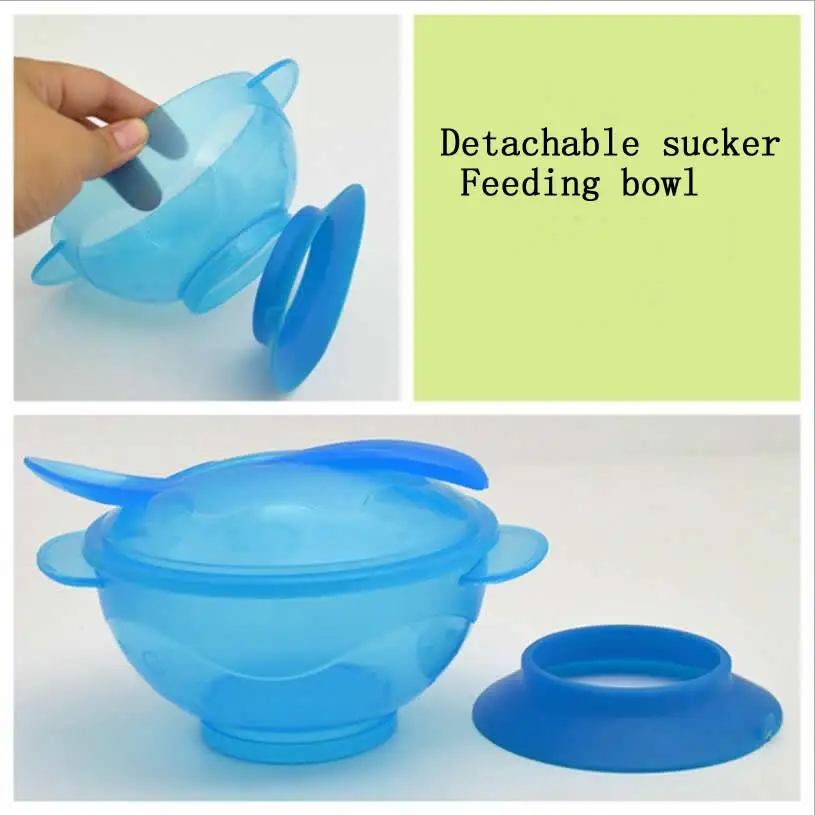 And by helping the birds, you are doing a good deed not only for wintering birds, but also for yourself.
And by helping the birds, you are doing a good deed not only for wintering birds, but also for yourself.
Questions and answers
This table contains frequently asked questions and answers to them:
| How to make a bird feeder | A bird feeder can be made from any available material. The simplest options are from a plastic 2 or 5 liter bottle, hard (cardboard) milk or juice bags. Feeders made of wood are very popular, they can be given any design and shape, colors. Very often you can see combined feeders made of wood and plastic elements. Today you can buy various bird feeders, the assembly will take no more than half an hour, which even a child can handle. | |
| How to hang the feeder | First of all, you need to remember that the feeder would be inaccessible to predators, in a quiet, windless place and should be as illuminated as possible. | |
| What birds appear at the feeder in winter | Sparrows, tits, blackbirds, bullfinches, goldfinches, greenfinches and even woodpeckers. It depends on several factors: | |
| Feeding rates for birds | It is generally accepted that there are approximately 5 birds per feeder. The daily rate of feeding, depending on the "visitors" of the feeder, should not exceed grain mixtures - 200 gr, weed seed mixtures - 200 gr, meat or lard - 50 gr. | |
| When to start feeding birds. When to stop feeding birds. | Feeding season for birds lasts approximately from October to March, but may vary depending on weather conditions. Top dressing should be started when it becomes more difficult for the birds to get their usual food - with the onset of the first frost, snowfall, constant rain. |

 In winter it eats small seeds. Often they can be seen in flocks of great tits.
In winter it eats small seeds. Often they can be seen in flocks of great tits.  Food is prepared in the summer. Spruce and pine seeds predominate among the stocks, but there are also stocks of animal feed. A very rare visitor to the city feeders.
Food is prepared in the summer. Spruce and pine seeds predominate among the stocks, but there are also stocks of animal feed. A very rare visitor to the city feeders.  They live in small flocks of 7-10 birds. The bullfinch feeds more often on seeds, buds and berries.
They live in small flocks of 7-10 birds. The bullfinch feeds more often on seeds, buds and berries. 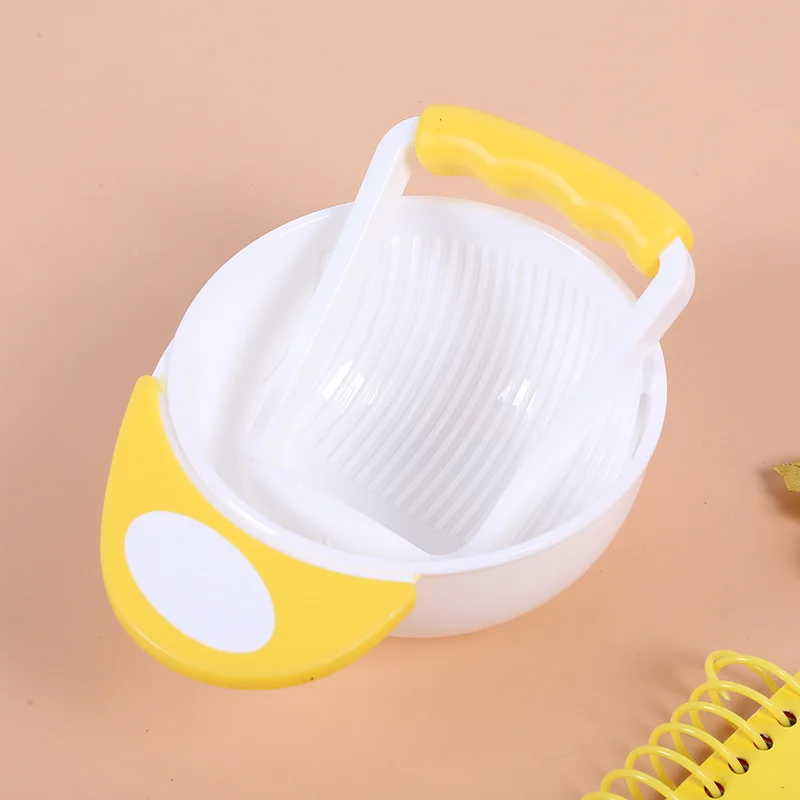 In summer, the fieldfare feeds on insects, worms, mollusks, spiders, and in the fall it switches to a variety of berries, especially loves mountain ash. In winter, many birds roam the gardens, parks and yards in search of food.
In summer, the fieldfare feeds on insects, worms, mollusks, spiders, and in the fall it switches to a variety of berries, especially loves mountain ash. In winter, many birds roam the gardens, parks and yards in search of food. 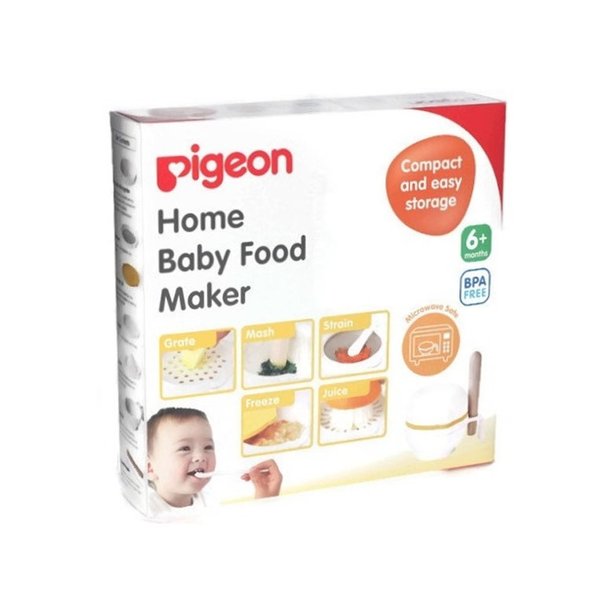 The best option is to hang the feeder on a tree branch. You can place the feeder on the balcony, outside the window or fix it on the wall, pole.
The best option is to hang the feeder on a tree branch. You can place the feeder on the balcony, outside the window or fix it on the wall, pole. 